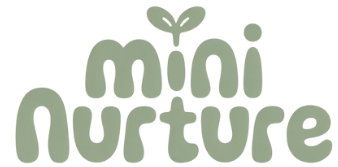Finding the right snacks for toddlers can feel challenging because they need foods that are both nutritious and easy to eat. Healthy toddler snacks should be small, balanced, and packed with nutrients to support growth and keep little tummies satisfied between meals. Offering a variety of fruits, vegetables, proteins, and whole grains helps meet their dietary needs while exposing them to new tastes and textures.

Snacks also provide a chance for toddlers to practice feeding themselves and explore food independently. Choosing snacks that are safe and suited to their chewing abilities is important to prevent choking. Simple ideas like cut-up fruits, soft veggies, yogurt, and small portions of whole grain crackers can create a healthy and enjoyable snack routine.
Key Takeaways
- Toddler snacks should be nutritious and sized for small appetites.
- Including fruit, vegetables, dairy, and protein supports healthy growth.
- Safety and variety help toddlers develop good eating habits.
Key Principles of Healthy Toddler Snacks

Healthy toddler snacks should provide the right nutrients, be safe to eat, and help children learn to make good food choices. Offering a range of foods supports growth and keeps toddlers interested in eating. Safety and portion size are also key to avoid risks like choking.
How to Balance Nutrition for Toddlers
Toddler snacks must include a mix of nutrients to support growth and energy. A good snack has protein, healthy fats, and fiber along with vitamins and minerals. Examples include cheese cubes with apple slices or yogurt with berries.
Avoid snacks high in sugar or salt, which can hurt appetite and health. Portion sizes should be small enough to avoid filling up before meals but nourishing enough to fuel active toddlers.
Using a variety of fruits, vegetables, whole grains, and proteins helps toddlers get a wide range of nutrients. This balance ensures they stay full longer and grow strong.
Snack Safety and Avoiding Choking Hazards
Safety is critical when giving toddler snacks. Always cut foods into small, manageable pieces to reduce choking risks. Round foods like grapes and cherry tomatoes should be quartered or smaller.
Avoid hard, sticky, or tough snacks such as whole nuts, popcorn, or large chunks of raw veggies. Supervise toddlers when they eat, especially with new or tricky foods.
Keep snacks soft or cooked when possible, such as steamed veggies or soft fruit pieces. Check that snacks are age-appropriate and easy to chew.
Encouraging Variety and Independence at Snack Time
Offering different types of snacks helps toddlers explore flavors and textures, making healthy eating more interesting. Rotate snacks regularly to include fruits, veggies, proteins, and grains.
Encourage toddlers to feed themselves with finger foods and small utensils. This builds fine motor skills and confidence.
Let toddlers help choose or prepare simple snacks. Involving them gives a sense of control and can reduce picky eating.
Setting a regular snack schedule with predictable times helps toddlers understand when to expect food, so they stay hungry for meals.
Fruit and Veggie-Based Toddler Snack Ideas

Fresh fruits and vegetables provide vitamins and fiber toddlers need. Using colorful, bite-sized pieces can keep snacks fun and appealing. Pairing these with simple dips or arranging them in creative ways helps encourage toddlers to try new flavors and textures.
Fresh Berries and Sliced Fruit
Berries like blueberries, strawberries, raspberries, and blackberries are small and easy for toddlers to eat. They can be served whole or halved to avoid choking hazards. Sliced peaches, grapes, and apple slices also make sweet, nutritious options.
Banana popsicles are a great way to combine fruit and a cool treat. Simply slice bananas, insert sticks, and freeze. These popsicles offer a soft texture and natural sweetness perfect for teething toddlers.
Applesauce is another toddler-friendly fruit option. It can be served plain or mixed with cinnamon for flavor. Raisins offer a chewy fruit snack but should be given carefully due to choking risks.
Creative Vegetable Snack Plates
Vegetables like tomatoes, sliced peppers, zucchini, broccoli, and cauliflower can be cut into small pieces or shapes to look inviting. Creating colorful plates with a mix of these veggies can encourage curiosity and tasting.
Adding visual interest, such as making funny faces with slices of veggies or arranging them in patterns, can make snack time playful. Steamed or lightly cooked veggies can soften tougher items, making them easier for toddlers to eat while still offering the nutrients of fresh vegetables.
Dips for Toddlers: Hummus and More
Simple dips help toddlers enjoy veggies by adding flavor and moisture. Hummus is a nutritious choice rich in protein and healthy fats, perfect for dipping broccoli florets, pepper slices, and zucchini sticks.
Other mild dips like yogurt-based dressings or pureed avocado can also be toddler-friendly. Avoid spicy or heavily salted dips. Offering dips in small containers allows toddlers to practice self-feeding and control how much they use.
Portable Fruit and Veggie Snacks
For snacks on the go, portability and ease of eating are key. Small containers of sliced fruit, such as grapes or berries, and pre-cut vegetable sticks like carrots or peppers work well.
Banana popsicles and small packs of raisins or dried fruit can travel easily too. Using divided snack boxes helps keep fruit and veggie options separate and fresh, making it simple to offer variety any time.
More ideas for healthy toddler snacks with fruits and vegetables are available at fun fruit and veggie snack ideas for your toddler.
Dairy, Protein, and Whole Grain Snack Ideas for Toddlers

Balanced snacks for toddlers often mix dairy, protein, and whole grains to support growth and keep kids full. These ingredients offer essential nutrients like calcium, protein, and fiber. Simple combos and standalone options can fit various tastes and schedules.
Quick and Easy Dairy Snacks
Dairy snacks provide calcium and protein important for toddler bone growth. Yogurt, especially Greek yogurt, is a popular choice because it is thick and rich in protein. It can be served plain or made into a yogurt parfait by layering with fresh fruit and a sprinkle of granola.
Cottage cheese is another good option. It can be served alone or topped with fruit for a sweet or savory snack. Cheese sticks, such as mozzarella or cheddar, are convenient for on-the-go snacking. These dairy choices are easy to prepare and usually well-accepted by toddlers.
Protein-Packed Snack Options
Protein helps toddlers grow muscles and stay energized. Hard-boiled eggs are quick, portable, and easy to mash with avocado when a softer texture is needed. Nut butters can be paired with fruit or toast for added protein, but always monitor for allergies.
Chia pudding, including chocolate chia pudding, is a great protein and fiber source. It can be made ahead and flavored with vanilla or cocoa powder to suit toddler tastes. These snacks keep kids fuller longer and can be adjusted for sweetness without added sugar.
Wholesome Grain-Based Snacks
Whole grains provide important fiber and energy for active toddlers. Granola bars made from whole oats and natural ingredients are a convenient option but should be checked for added sugars or artificial flavors.
Oat bites are simple, homemade snacks that combine oats with ingredients like mashed banana or nut butter. They are soft, easy to chew, and can be flavored with cinnamon or dried fruit. These grain-based snacks offer slow-release energy and help support digestion.
For a balanced snack, combining grains with protein or dairy, such as oat bites with yogurt parfaits, creates variety and nutritional value toddlers need.
For more ideas on wholesome snacks, see this Master List of Healthy Snacks for Kids and Toddlers.
Creative Toddler Snack Ideas and Fun Presentations

Toddlers are more likely to enjoy snacks if the food looks fun and is easy to eat. Combining different textures, colors, and shapes can make snack time exciting. Using simple recipes that toddlers can handle helps build their independence while keeping snacks healthy and appealing.
Mix-and-Match Snack Plates
Mix-and-match snack plates give toddlers variety in a single meal. These plates often include multiple small portions from different food groups, such as fruits, veggies, protein, and grains. For example:
- Sliced cucumbers with hummus
- Cheese cubes
- Mini whole-grain crackers
- Fresh berries
This approach encourages toddlers to try new foods without feeling overwhelmed. Parents can customize plates based on what their child likes or what is in season. Using colorful plates or fun cups can also help keep snacks visually interesting and organized.
Simple and Appealing Snack Recipes
Toddler snack ideas work best when they’re easy to prepare and eat. Recipes like ham and cheese pinwheels, fruit kabobs with yogurt dip, or homemade goldfish crackers balance nutrition with fun.
Pinwheels are bite-sized and protein-filled, perfect for small hands. Fruit kabobs are colorful and pair well with dips, encouraging kids to enjoy fresh fruit. Homemade goldfish crackers are crunchy and free from preservatives often found in store-bought snacks.
These recipes offer simple ways to serve balanced snacks without extra hassle, enabling parents to prepare them in advance or for busy days.
Making Snacks More Engaging for Toddlers
Engaging toddlers with snacks means making food presentation creative and playful. Using cookie cutters to shape sandwiches or fruits into stars or hearts adds excitement. Arranging fruits in patterns or building “snack faces” with veggies and cheese can also capture their interest.
Allowing toddlers to help prepare their snacks boosts their willingness to try new foods. Simple tasks like arranging fruit on skewers or dipping pieces into yogurt increase engagement. This hands-on approach creates positive associations with food while making snack time more fun and less of a chore.
For more creative presentation ideas that toddlers will enjoy, see creative food ideas for kids.
Frequently Asked Questions

Toddlers need snacks that provide energy and nutrients while fitting their eating abilities and preferences. Snacks should include fruits, vegetables, grains, proteins, and dairy in balanced ways. Safe preparation and thoughtful choices can meet specific needs and settings.
What are some nutritious snack options for a 1-year-old toddler?
Soft fruits like banana slices, cooked apple pieces, and small bits of avocado are good choices. Mild cheeses, plain yogurt, and well-cooked veggies like sweet potato or peas work well. Avoid choking hazards like whole grapes or nuts.
Can you suggest easy-to-prepare snacks for a 2-year-old?
Simple snacks like whole-grain crackers with cheese, apple slices with peanut butter, and hummus with cucumber sticks are quick and nutritious. Mini muffins made with whole grains and fruit also provide energy and nutrients.
What are healthy on-the-go snack choices for toddlers?
Portable options include yogurt tubes, sliced fruit, veggie sticks with dip, and whole-grain snack bars low in sugar. Reusable snack containers help organize portions and keep snacks fresh during outings. Frozen fruit popsicles can be refreshing on warm days.
What snacks are suitable for toddlers with dietary restrictions?
For allergies, select snacks free of common allergens like nuts or dairy. Options include fruit slices, cooked vegetables, rice cakes, and pea or carrot hummus. Always check ingredient labels carefully to avoid allergens and prepare foods that suit individual dietary needs.
How can I create a balanced snack menu for a toddler at daycare?
Include snacks with at least two food groups like fruit and protein or grain and dairy. Examples are cheese sticks with pear slices or boiled egg with steamed carrots. Pack snacks that are easy to eat, less messy, and follow the daycare’s food policies.
What are some age-appropriate snack ideas for preschoolers?
Preschoolers can handle a wider variety of textures, so snacks like whole-grain muffins, veggie quesadillas, fruit kabobs with yogurt dip, and sliced cheese with crackers are suitable. Offering new foods alongside favorites encourages trying different tastes.
For more ideas on toddler snacks, visit 100 Snack Ideas for Kids.

